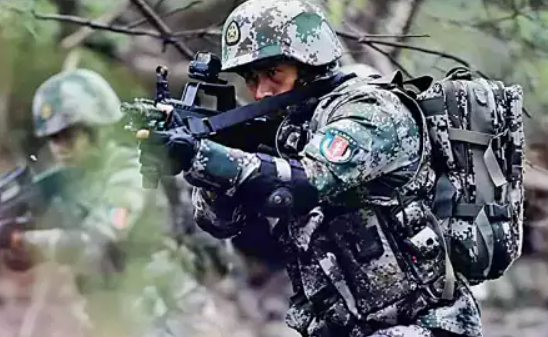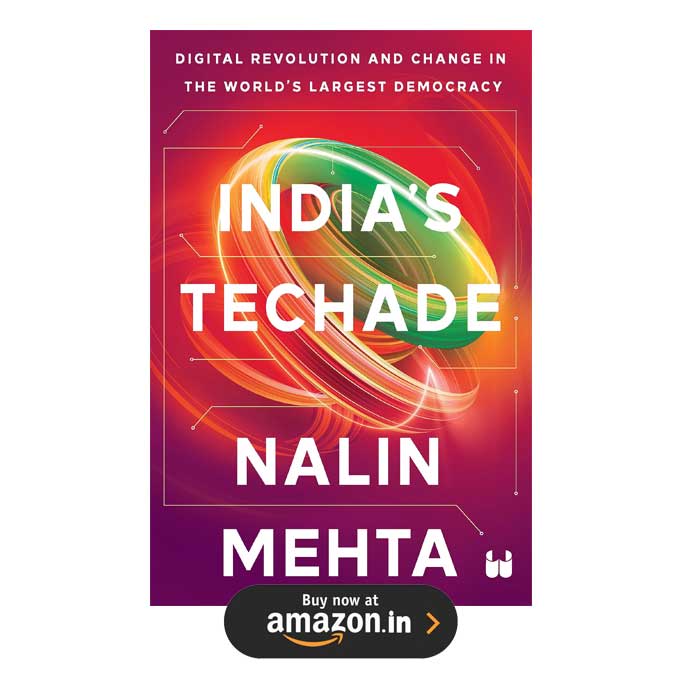A nation’s movies often reflect its self-image. War films, even more so. As Indian troops face down China’s People Liberation Army in the Galwan Valley and across the Line of Actual Control, it is not entirely coincidental that the shift to such aggressive posturing by China on its real-life borders, from Ladakh to the South China Sea, was preceded in recent years by a major shift in depictions of the PLA in Chinese films.
Until 2014 or so, Chinese films hardly depicted any military conflict beyond World War II or the Chinese civil war of the 1940s. This trend changed completely with a new range of Hollywood-style Chinese war movies. They showcased a new kind of PLA and the idea of China as a global military superpower, as the journalists Charles Clover and Sherry Fei Ju noted in a perceptive 2018 overview of this phenomenon. The shift started, they said, with ‘Wolf Warrior’ in 2015, ‘Sky Hunter’ in 2017 and ‘Operation Red Sea’ in 2018.
All these films had one thing in common: Chinese commandos fighting in global conflict zones from the Middle East to Africa, often against ‘White’ American mercenaries. Like the Rambo films of the 1980s that reflected America’s idea of itself as a superpower, this set of Chinese films reflected the emerging Chinese self-image of a muscular global power. So much so that when Chinese diplomats now respond to diplomatic tussles with verbal aggression, they are said to be practising ‘Wolf Warrior’ diplomacy, as Gideon Rachman recently noted.
A nation’s movies often reflect its self-image. War films, even more so. As Indian troops face down China’s People Liberation Army in the Galwan Valley and across the Line of Actual Control, it is not entirely coincidental that the shift to such aggressive posturing by China on its real-life borders, from Ladakh to the South China Sea, was preceded in recent years by a major shift in depictions of the PLA in Chinese films.
Until 2014 or so, Chinese films hardly depicted any military conflict beyond World War II or the Chinese civil war of the 1940s. This trend changed completely with a new range of Hollywood-style Chinese war movies. They showcased a new kind of PLA and the idea of China as a global military superpower, as the journalists Charles Clover and Sherry Fei Ju noted in a perceptive 2018 overview of this phenomenon. The shift started, they said, with ‘Wolf Warrior’ in 2015, ‘Sky Hunter’ in 2017 and ‘Operation Red Sea’ in 2018.
All these films had one thing in common: Chinese commandos fighting in global conflict zones from the Middle East to Africa, often against ‘White’ American mercenaries. Like the Rambo films of the 1980s that reflected America’s idea of itself as a superpower, this set of Chinese films reflected the emerging Chinese self-image of a muscular global power. So much so that when Chinese diplomats now respond to diplomatic tussles with verbal aggression, they are said to be practising ‘Wolf Warrior’ diplomacy, as Gideon Rachman recently noted.
Many of these Chinese films were produced with direct support from the Chinese military and had real military equipment — ‘Operation Red Sea’ featured the Chinese Navy’s frigates, ‘Sky Hunter’ had the J20 stealth fighter and ‘Wolf Warrior 2’, the biggest blockbuster in Chinese history, had PLA tanks.
In contrast, Indian war films have always had a local canvas: remaining focused almost entirely on Pakistan. There have been exceptions like Chetan Anand’s masterly Haqeeqat on the 1962 war or the odd Madras Café on Sri Lanka — but they have all been rooted in past Indian conflicts. As in the world of fiction, in the real world too, our security imagination as a society has almost entirely been Pakistan-focused. China was always in the background, but most people took the calm of the last 40 years on the eastern borders for granted. Now that this illusion is broken, it is time to do an honest stock-taking.
Make no mistake: the Indian Army is more than capable of giving the Chinese a bloody nose and is well-matched in the mountains as we have seen in recent clashes. Yet, at structural levels, there is a huge asymmetry that we must fix.
First, China spends $182 per person per year on defence. Indian per capita spending on defence is less than one-third: $52 per person. Even though India has been spending more than China on defence as a percentage of government spending — 8.8% compared to 5.4% by China — Chinese defence spending completely dwarfs India’s in real terms because China’s economy is much larger. China, in 2019, was estimated by SIPRI to have spent $261 billion on defence, more than three-and-a-half times India’s estimated $71 billion. In the last 10 years, Chinese military spending more than doubled, from $115.7 billion in 2010 to $261 billion in 2019. Indian military spending, on the other hand, is estimated to have gone up only by half from $46 billion in 2010.
Second, though India’s defence budget gets the highest allocation of all ministries, much of it goes into wages. This year the defence ministry will be spending almost as much on pensions (28.4%) as on salaries (30.2%).
Third, China’s increased military spending is part of a clear strategic ramp-up. The PLA was not a modern force until a decade ago. Xi Jinping termed the problems with the Chinese military as the ‘Five Incapables’ and publicly set a target in 2012 to turn the PLA into a “world class force” by 2030.
Since then, China not only downsized its Army personnel by 300,000, it reorganised the army, navy and air force into five integrated “theatre commands” for greater battle efficiency. In contrast, India’s army (7), navy (3) and air force (7) operate a total of 19 commands, all separately managed by each service (except two joint commands).
Fourth, there is a weapons gap. The Indian Navy is deployed on the eastern seaboard but has only 16 submarines, compared to China’s 74. Indian Air Force has 538 combat aircraft, China’s has 1,232. India has 8,686 armoured vehicles, the Chinese over 30,000.
India has a battle-hardened Army while the PLA hasn’t fought a war in over 40 years, but in the long run, India will need to rebalance its huge military asymmetry with China. Beijing has reset its strategic calculus. It is time New Delhi does so too.
In recent years, Chinese movies such as Wolf Warrior (in pic) have projected the image of a muscular global power
Many of these Chinese films were produced with direct support from the Chinese military and had real military equipment — ‘Operation Red Sea’ featured the Chinese Navy’s frigates, ‘Sky Hunter’ had the J20 stealth fighter and ‘Wolf Warrior 2’, the biggest blockbuster in Chinese history, had PLA tanks.
In contrast, Indian war films have always had a local canvas: remaining focused almost entirely on Pakistan. There have been exceptions like Chetan Anand’s masterly Haqeeqat on the 1962 war or the odd Madras Café on Sri Lanka — but they have all been rooted in past Indian conflicts. As in the world of fiction, in the real world too, our security imagination as a society has almost entirely been Pakistan-focused. China was always in the background, but most people took the calm of the last 40 years on the eastern borders for granted. Now that this illusion is broken, it is time to do an honest stock-taking.
Make no mistake: the Indian Army is more than capable of giving the Chinese a bloody nose and is well-matched in the mountains as we have seen in recent clashes. Yet, at structural levels, there is a huge asymmetry that we must fix.
First, China spends $182 per person per year on defence. Indian per capita spending on defence is less than one-third: $52 per person. Even though India has been spending more than China on defence as a percentage of government spending — 8.8% compared to 5.4% by China — Chinese defence spending completely dwarfs India’s in real terms because China’s economy is much larger. China, in 2019, was estimated by SIPRI to have spent $261 billion on defence, more than three-and-a-half times India’s estimated $71 billion. In the last 10 years, Chinese military spending more than doubled, from $115.7 billion in 2010 to $261 billion in 2019. Indian military spending, on the other hand, is estimated to have gone up only by half from $46 billion in 2010.
Second, though India’s defence budget gets the highest allocation of all ministries, much of it goes into wages. This year the defence ministry will be spending almost as much on pensions (28.4%) as on salaries (30.2%).
Third, China’s increased military spending is part of a clear strategic ramp-up. The PLA was not a modern force until a decade ago. Xi Jinping termed the problems with the Chinese military as the ‘Five Incapables’ and publicly set a target in 2012 to turn the PLA into a “world class force” by 2030.
Since then, China not only downsized its Army personnel by 300,000, it reorganised the army, navy and air force into five integrated “theatre commands” for greater battle efficiency. In contrast, India’s army (7), navy (3) and air force (7) operate a total of 19 commands, all separately managed by each service (except two joint commands).
Fourth, there is a weapons gap. The Indian Navy is deployed on the eastern seaboard but has only 16 submarines, compared to China’s 74. Indian Air Force has 538 combat aircraft, China’s has 1,232. India has 8,686 armoured vehicles, the Chinese over 30,000.
India has a battle-hardened Army while the PLA hasn’t fought a war in over 40 years, but in the long run, India will need to rebalance its huge military asymmetry with China. Beijing has reset its strategic calculus. It is time New Delhi does so too.
Originally published in



